Souls, Food
NLM Exhibit Provides Backstory, Complexity to What We Know About Slavery
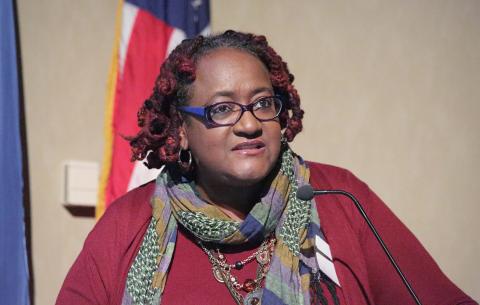
Photo: Bill Branson
By about 4:30 a.m. every day, two colonial-era cooks—Nathan and Lucy, both slaves—were well into their typical work day on Mount Vernon plantation near Alexandria, Va. We know from historical record that a cook’s duties would have included lighting fires in the kitchen hearth for breakfast prep, and perhaps in the dining room for warmth of those seated to eat. We know what routine morning meals might have included—some kind of freshly baked bread, certainly a hot drink. We even know favorite foods of homeowner George Washington—he was partial to a drink/broth he called “mint water.” But what else do we know about Nathan and Lucy? And what insight on the period might research on food provide?
“Even as you arise and go about your day, start your commute, you’re bringing with you your histories, your traumas, your creativities—all of the things that make you you,” explained Dr. Psyche Williams-Forson in a lecture Nov. 3 introducing a recent exhibit at the National Library of Medicine. “How much more then would enslaved people do the same?”
Associate professor and chair of American studies at the University of Maryland, Williams-Forson served as guest curator of “Fire and Freedom: Food and Enslavement in Early America,” a special display in the NLM reading room that aims to provide context—some backstories—to the bare-bones narrative many people have about the roughly 300 years in early American history when it was commonplace for humans to own other humans.
Plant the Seeds
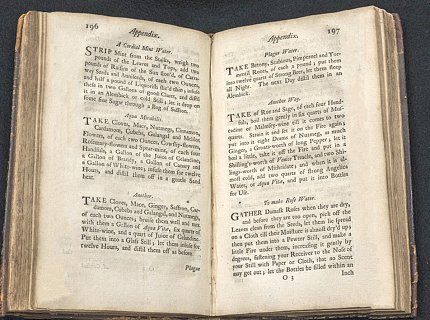
Photo: NLM
In both exhibit and lecture, Williams-Forson encourages viewers to think beyond stereotypes and traditional assumptions about food on an 18th century plantation in order to get a fuller appreciation of the times.
“If meals tell stories,” she said, “what then can we learn about African-American cultures and lives and histories when we study food?...What we know about African-American food and foodways—and particularly African aspects of African-American culture—tends to follow one line of thinking. So it was part of my challenge to create an exhibit that went beyond the single story.”
Using documents from NLM’s History of Medicine Division, which produced the exhibit over a 2-year period, along with artifacts and narratives from another local installation, “Lives Bound Together—Slavery at George Washington’s Mount Vernon,” Williams-Forson and an exhibition program team wove more intricate plot lines and character studies into what is still a largely uncharted territory of our nation’s past.
Set the Table
“We’re at a time in society and certainly our local area where reclaiming African-American history is front and center,” said Williams-Forson, author of the book Building Houses Out of Chicken Legs—Black Women, Food and Power.
“The stories detailing African-American food histories are long and complicated,” she continued. “They are about more than just the cook’s day—the labor of it all…I knew I had to tell the stories of toil, of dangers, of tensions, of celebrations, of triumphs, of creativity and ingenuity and more, even as I considered how the cooks would go about their day. More than a food culture that solely stems from scraps and offal, African Americans have used food and foodways practices not just for nourishment but also to resist white oppression—even when it meant using poison and theft.”
“Foodways,” Williams-Forson explained, is a term used to describe the whole sustenance spectrum—from conceptualization to procurement to consumption, farm to table, so to speak—shared by a particular group. The exhibit focuses on food events, she said, to communicate the relationship between food and identity, power, behavior and emotions.
“Many enslaved people also used food as a way to assert their humanity,” Williams-Forson said. “They employed techniques that demonstrated a modicum of power even as it displayed cultural continuity, improvisation and ingenuity.” Of course “food was used to heal, to nourish,” she pointed out, but also to surveil, to plan, “to kill and even to escape.”
Assemble the Ingredients
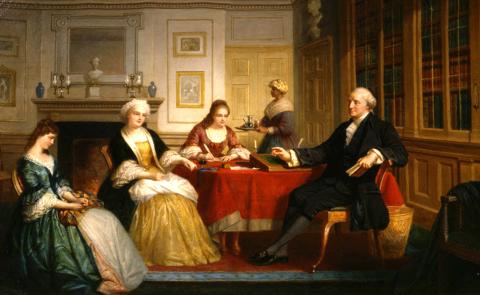
Photo: The Mount Vernon Ladies' Association
On many a drafty night on the plantation, George Washington writes in a long-preserved journal, the eventual first president of the United States would call on another of his slave-cooks, an aged woman referred to only as “Old Doll,” to make mint water for him. Apparently Washington enjoyed a measure of the warm tea-like drink —a recipe for which was unearthed from NLM archives for the exhibit—as an elixir felt to ease a sore throat, upset stomach or indigestion.
In the NLM lecture, Williams-Forson discussed the lives of survival endured by Old Doll and other slaves—particularly women—charged with preparing food for their owners. What were they thinking, feeling, saying to each other at the time?
“It’s really important when we talk about enslavement to think broadly about these conversations. Some of this is common sense, but because we’ve been told one narrative—the Middle Passage—we tend not to think about these nuances and we tend not to think of the gender dimensions.”
Stir It Up
Williams-Forson traced black foodways back to their origins, to lay a foundation for plantation meals.
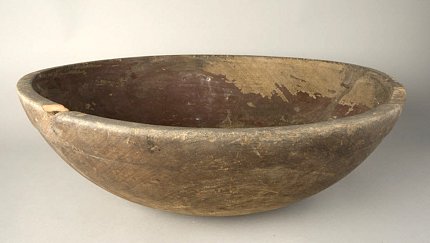
Photo: The Mount Vernon Ladies' Association
“African foods and livestock made their way to the Americas during the Middle Passage when Europeans stocked and restocked slave ships,” she said, citing the work of such fellow historians as Dr. Judith Carney of UCLA. Plants and herbs such as tamarind, hibiscus flowers and cola nut came to U.S. shores as ship provisions, both to improve taste and fight diseases resulting from vitamin deficiency.
In addition, Williams-Forson said, slaves en route were “often fed forcibly,” according to notes by Thomas Trotter, a physician aboard the slave ship Brooks. The slave trade, she reminded, was after all a business that required keeping “cargo” alive and healthy for delivery to customers.
Women captives were essential; they were “needed to dress the victuals,” according to one slave ship captain in his journal. Williams-Forson said there’s more to learn about “the important role of women on slave ships.
Add Some Heat
“It’s more than just their labor,” she pointed out. “If women have access to the food, then they also have access to weaponry [and other forms of power]. They know the movements and patterns of the slavers on the ship…It’s important to note this, because that means women also participated largely in the mutinies.”
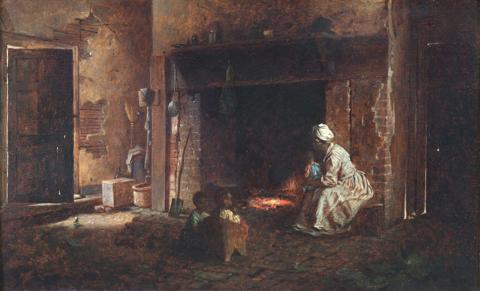
Photo: The Mount Vernon Ladies' Association
Collecting material from a number of other scholars and historians, Williams-Forson was able to document other slave contributions to the New World’s foodways: African yams, plantains, Guinea peppers, pigeon peas, okra, black-eyed peas, rice, watermelon, peanuts and sesame seeds, as well as such food prep methods as stewing or slow-cooking, grilling, deep-frying and 1-pot meals.
Williams-Forson said, “Absence of familiar tools and ingredients meant enslaved people’s foodways had to merge with both Native and colonial peoples. Spices and herbs were introduced to disguise spoiled meats and to enhance flavor…local grasses were used for medicinal purposes as much as for taste and variety.” Near former slave quarters, archaeologists also discovered rudimentary “colonoware”–hand-built, unglazed, locally made pots and pans.
Serve the Meal
On Feb. 22, 1797, Washington’s 61st birthday, a long-time slave named Hercules, who the family had celebrated as an “artiste chef,” escaped from Mount Vernon—leaving behind children, grandchildren and more independence than most—never to be heard from again. Why did he run and why on that day?

Photo: Museo Thyssen-Bornemisza/Scala/Art Resource, NY
“Early Africans’ lives were entangled in tensions and mired in trauma,” Williams-Forson said. “Food acquisition, preparation and consumption was also mired in trauma…[At Mount Vernon] you’re surrounded by water and yet…What must it have been like to see freedom and not be able to get to freedom? When you think about your own life and consider what it would mean having your movements restricted and surveilled and every day living under this constant psychological trauma, food takes on an entirely different meaning.”
To slaves, food embodied a lot more than sustenance, Williams-Forson concluded. Responsibility for feeding those who hold you in bondage required ingenuity, wits and survivalism and involved careful navigation of the power dynamic and demarcation of status.
“Freedom and food were inextricably linked because for some—and maybe even many African-American men and women—foodways were a major vehicle for the expression of culture or an identity,” she said. “This is due in no small part to the ways that food was stretched, augmented and made tasty and sustaining while filled with ritual and tradition…
“‘Labor of love’—that’s often how we talk about cooking,” she noted, but consider it from a slave’s point of view. The full lecture is archived at https://videocast.nih.gov/summary.asp?Live=19946&bhcp=1.

